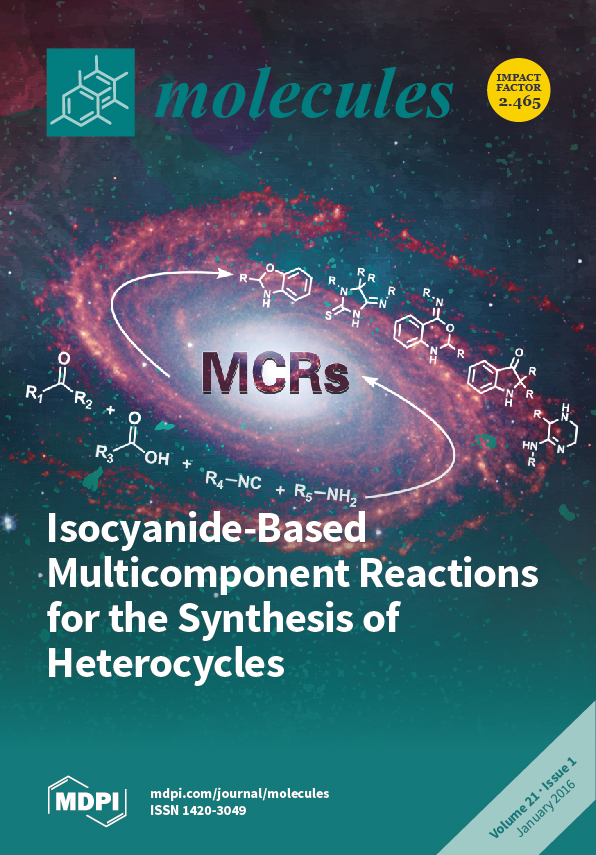Phytochemical investigation of the bark of
Juglans sinensis Dode (Juglandaceae) led to the isolation of two active compounds, 8-hydroxy-2-methoxy-1,4-naphthoquinone (
1) and 5-hydroxy-2-methoxy-1,4-naphthoquinone (
2), together with 15 known compounds
3–
17. All compounds were isolated from this plant
[...] Read more.
Phytochemical investigation of the bark of
Juglans sinensis Dode (Juglandaceae) led to the isolation of two active compounds, 8-hydroxy-2-methoxy-1,4-naphthoquinone (
1) and 5-hydroxy-2-methoxy-1,4-naphthoquinone (
2), together with 15 known compounds
3–
17. All compounds were isolated from this plant for the first time. The structures of
1 and
2 were elucidated by spectroscopic data analysis, including 1D and 2D NMR experiments. Compounds
1–
17 were tested for their cytotoxicity against the A549 human lung cancer cell line; compounds
1 and
2 exhibited significant cytotoxicity and additionally had potent cytotoxicity against six human cancer cell lines, MCF7 (breast cancer), SNU423 (liver cancer), SH-SY5Y (neuroblastoma), HeLa (cervical cancer), HCT116 (colorectal cancer), and A549 (lung cancer). In particular, breast, colon, and lung cancer cells were more sensitive to the treatment using compound
1. In addition, compounds
1 and
2 showed strong cytotoxic activity towards human breast cancer cells MCF7, HS578T, and T47D, but not towards MCF10A normal-like breast cells. They also inhibited the colony formation of MCF7, A549, and HCT116 cells in a dose-dependent manner. Flow cytometry analysis revealed that the percentage of apoptotic cells significantly increased in MCF7 cells upon the treatment with compounds
1 and
2. The mechanism of cell death caused by compounds
1 and
2 may be attributed to the upregulation of Bax and downregulation of Bcl2. These findings suggest that compounds
1 and
2 may be regarded as potential therapeutic agents against cancer.
Full article






